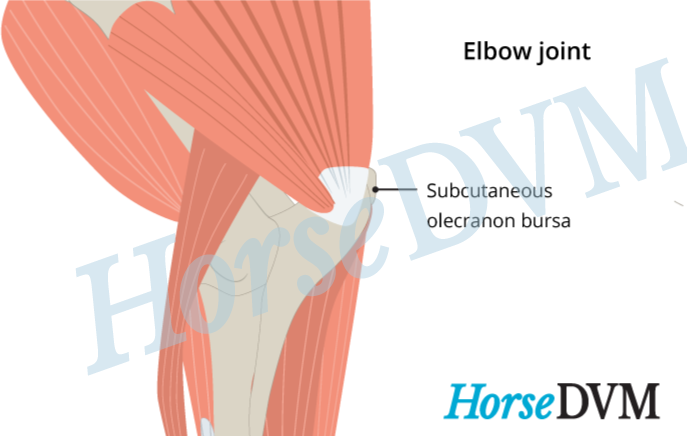Capped elbow is a soft, fluid-filled swelling that develops just beneath the skin surface over the point of the horse's elbow.
The swelling can range in size from barely noticeable to the size of a melon. It develops as a result of (usually chronic) trauma to that specific location. Horses often rest on the point of their elbow while laying down, and usually use it as an aid in getting up from laying down. Capped elbow is frequently found in horses that are housed on a hard substrate, such as a stall with little to no bedding substrate. It can also be caused by wearing horseshoes that project beyond the heels.
Early clinical signs of capped elbow in horses may consist of minor skin irritation, with hairless, flaky, and/or thickened skin. Over a period of time, if the repeated trauma continues to occur, the elbow can become infected and form a false bursa---which is a painful, abscess-like swelling that requires surgical drainage by your veterinarian. However, if the swelling has been present for longer than a month, surgical removal of the fibrous sac may be necessary.
